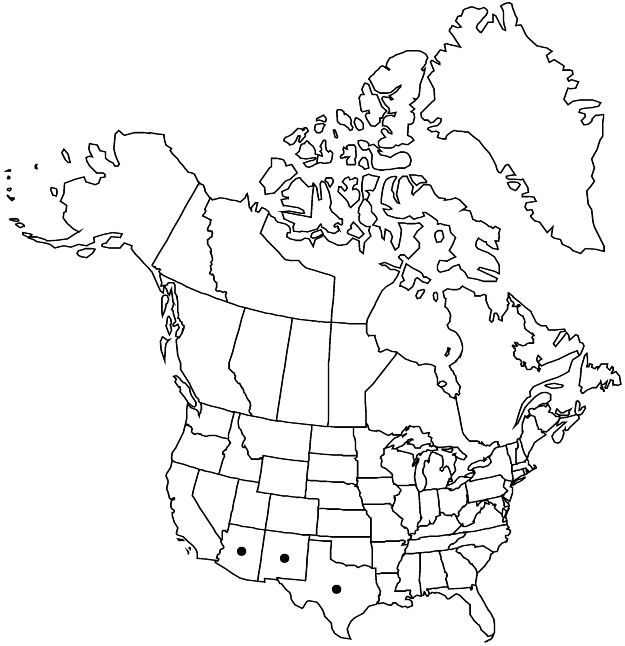Ayenia microphylla
Smithsonian Contr. Knowl. 3(5): 24. 1852.
Shrubs, erect or spreading, 0.2–0.6 m. Stems hairy, hairs stellate, arms appressed. Leaves: petiole 0.4–1.2 cm; blades of proximal leaves orbiculate to suborbiculate, 0.5 × 0.4 cm, distal ovate to narrowly ovate, unlobed, 0.5–2.1(–3) × 0.4–1.8(–2) cm, base rounded or obscurely subcordate, margins serrate, stellate-hairy (not ciliate), apex acute to rounded, 3(–5)-veined from base, surfaces minutely, densely stellate-hairy. Cymes axillary, borne on short shoots (brachyblasts), 1- or 2-flowered; peduncle to 4 mm. Pedicels to 4 mm. Flowers: sepals caducous, not reflexed at anthesis, ovate-lanceolate, 2.5–3.2 mm, densely stellate-pubescent abaxially; petal claws 4 mm, lamina reniform-deltate, 1.4–1.6 × 1.5 mm, base lobed, lobes ± rectangular, margins entire, apex with 2 widely spaced teeth, surfaces glabrous, abaxial appendage absent; androgynophore 0.5–1 mm; stamen filaments present; stigmas scarcely exserted. Capsules subspheric, 4–5 × 4–5 mm, puberulent to densely stellate-pubescent, prickles 0.5 mm. Seeds 3 mm, tuberculate.
Phenology: Flowering and fruiting spring–early fall.
Habitat: Dry limestone, igneous rocky slopes
Elevation: 600–1400 m
Distribution

Ariz., N.Mex., Tex., Mexico (Coahuila).
Discussion
Ayenia microphylla can be distinguished from other Ayenia species in the flora area by the presence of short shoots (brachyblasts) from which leaves and inflorescences emerge. In Texas, the species is known from the trans-Pecos region.
Selected References
None.